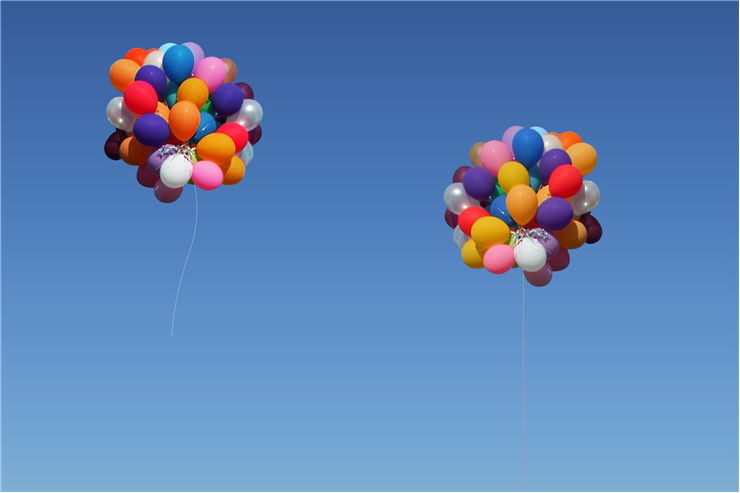History of Facts about Cluster Ballooning
Cluster ballooning is a ballooning technique where a single balloonist is attached to a cluster of helium-inflated rubber balloons by means of harness. This differs from the standard ballooning in that there is no basket or gondola (just a harness or a seat) and while there is single large balloon is equipped with vents enabling altitude control here the only way to control the altitude is to jettisons or deflate balloons or to use ballast.
Cluster balloons are also flown in the very early morning, when winds are calm and a crew of fifteen to twenty people is needed to inflate the balloons in about an hour and a half. Inflated balloons are sealed with tape and cable ties, and are tied with nylon twine which will be used to attach in groups of four or more to the ends of long nylon straps called risers. These risers are then attached to the pilot's harness which is designed for paragliding and has a rear-mounted emergency parachute - for an emergency. When enough balloons are tied to the harness, pilot gives a signal and he is released from the ground tether. Wind carries the cluster balloon and the fact that different wind directions exist at different altitudes can be used to steer the balloon. Toy balloon is used prior to launch so a pilot could see the wind directions of different altitudes. Recreational flying is done on altitudes between 1,000 and 1,500m. Chase crew is needed during the landing to help the pilot and stop the balloon from dragging the pilot and potentially hurting him. If there is no crew and the winds are too strong the pilot may have to cut away the harness or burst many balloons to stop from dragging.
The first to use cluster balloons was Jean Piccard, a ballooning pioneer who in 1937 tried this idea. He used using 98 latex weather balloons attached to a hot air balloon basket and achieved height of 3km. After him came others. In 1954, Gary Cashman used hydrogen-filled weather balloons attached to a seat on which he made several flights. Jean Piccard’s son Don also flew cluster balloons in 1957 and 1962. Second flight was to 5,400m which is still a world altitude record for this type of balloons. Professionals weren’t the only ones who tried this kind of flying. Larry Walters that didn’t have any prior ballooning experience was one of them. He used 42 helium-filled weather balloons which he attached to a lawn chair and thought that he will ascend to the height of few meters. Instead he reached some 5,000 meters on July 2, 1982. He safely landed (although he managed to contact power lines at landing) and was fined several thousand dollars by the FAA because you need a license to fly anything. Yoshikazu Suzuki used helium balloons in a similar way and took off from Lake Biwa in Japan on November 23, 1992. Japanese coast guard airplane saw him on November 25th somewhere 800 km offshore over the Pacific Ocean but after that was never seen again. Roman Catholic priest Adelir Antonio de Carli used 1000 balloons in April 2008, in Brazil. He flew above the ocean and his body was later found on 5 July 2008. In June 2008, FAA licensed pilot Jonathan R. Trappe attached cluster balloons to an office chair and flew to an altitude of 4,500m. Trappe also crossed the English Channel with a cluster balloon on May 28, 2010.
Smaller balloons are easier to obtain than bigger balloons, which makes them more accessible to the amateurs and untrained which we all know how can end.

